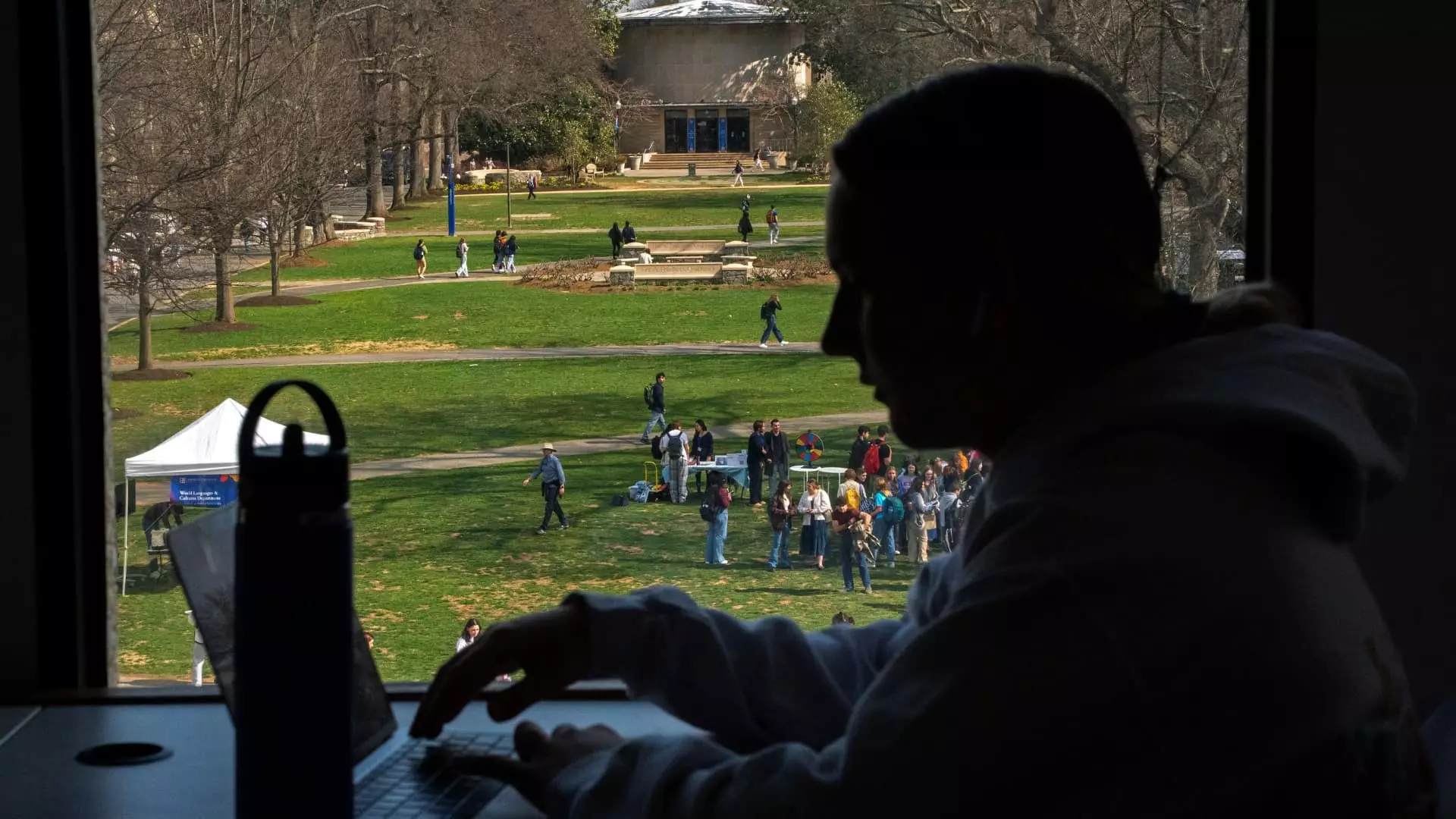In an unsettling forecast from the Federal Reserve Bank of New York, over 9 million student loan borrowers are on the brink of facing serious financial consequences as they fall behind on their payments. The alarming report suggests that these individuals could suffer “significant drops” in their credit scores throughout the first half of 2025. With some borrowers potentially witnessing a staggering decline of up to 171 points, the implications of this situation extend far beyond numbers. A drop like this could mean the difference between qualifying for a mortgage or being denied the chance at homeownership entirely. The impact will be particularly severe for those already navigating precarious financial landscapes, specifically those with credit scores above 670, which are typically deemed good.
As we witness a gradual return to a harsh repayment landscape post-pandemic, we must consider the broader societal ramifications of such significant credit penalties. Under the scrutiny of economic analysts, the urgency of this matter is indisputable. The ramifications are most pronounced for those borrowers who had the most to lose—those who had previously maintained good credit but will now be thrust into a downward spiral of daunting financial stress.
The Hidden Costs of Student Loan Delinquency
The dawning reemergence of student loan delinquencies comes at a time when the economy seems to be teetering back towards some semblance of stability. While many Americans are still recovering from the long-lasting impacts of the pandemic, the Federal Reserve has made it clear that there will be no further forbearance measures this time around. The expiration of these relief periods spells doom for borrowers who were perhaps able to navigate their finances without an overwhelming burden for a while. As the announcement of resumed collection activity looms closer, borrowers are left to scramble for options, while the clock ticks down on their financial well-being.
Doug Boneparth, a certified financial planner, encapsulates the potential fallout succinctly: this credit score penalty could severely limit one’s access to affordable financing, reinforcing a vicious cycle that prevents families from rebounding economically. The stark reality is that student loan debts are a long-term financial commitment; if mishandled, they don’t simply disappear but haunt borrowers for years on end—with a black mark on their credit history lasting a full seven years.
The indicators of this crisis emerge as calls for intervention rise. Are policymakers prepared to facilitate meaningful change and assistance for the millions about to plunge into financial despair?
Potential Solutions: A Beaten Path to Financial Recovery
While the forecast appears grim, solutions do exist, albeit they require a proactive approach. For borrowers teetering on the edge of default, exploring repayment plans aligned with one’s income is essential. Programs like income-driven repayment plans can adapt monthly payments to match fiscal realities, often resulting in payments amounting to zero for those with limited resources. This is a welcome solution for many, but such systems require elevated awareness and accessibility that must be improved.
The Department of Education has revived applications for these income-driven repayment plans, a move that could potentially shield borrowers from delinquency. Furthermore, avenues like deferments or forbearances could be invaluable lifelines in moments of uncertainty. While these options may appear on credit reports, they don’t carry the negative connotation of outright delinquencies, providing a slight buffer against the damage wrought by financial hardships.
For those already ensnared in the web of default, the process of loan rehabilitation or consolidation could offer a way out. Rehabilitation involves meeting specific criteria, such as making nine voluntary, reasonable payments. This excruciatingly bureaucratic solution brings hope to some, but it also underscores larger systemic issues—the complexity of student debt management often buries that hope beneath layers of confusion.
A System in Need of Reform
Expert opinions emerge not only advocating for individual borrower responsibility but also calling for broader systemic reforms. The current landscape reflects an education debt system rife with complications; addressing this moral quandary has become an urgent necessity. The impending financial crisis surrounding student loans raises several questions regarding loan servicers’ role in providing timely information and support to distressed borrowers.
As these financial consequences loom over 9 million student loan borrowers, it’s imperative that we engage in discussions around broader education financing reforms. Policymakers must commit to creating a more forgiving and just system of student loans that prioritizes educational attainment over everlasting financial despair. The looming crisis exposes the cracks within our financial systems, revealing a truth that cannot be ignored: tackling the student debt crisis is not merely a matter of personal responsibility; it’s a pressing social concern demanding immediate attention.

